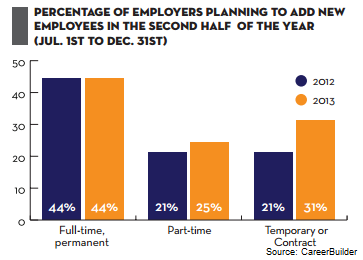The Baby Boomer generation has experienced some of the most drastic changes to how we conduct business that the world has ever seen.
Among them: globalization and the rise of multi-national corporations, the explosive growth and mass adoption of advanced computing technology, and the introduction of entirely new industries that few could have anticipated or foreseen.
This year, the oldest members of the Baby Boomer generation (those born in 1946) will reach a common retirement age in the United States – 67 years. When Baby Boomers retire from their respective organizations, they will take with them years of valuable earned experience. And while college graduates are eager to fill the numbers gap left by retiring workers, they cannot replace the institutional business and industry-related knowledge Baby Boomers hold.
Preparing for retirements – and knowledge drain
This knowledge is rarely found in textbooks or formal workplace documents that can be passed on to an employee moving into a retiring Baby Boomer’s role. In fact, it’s rarely documented anywhere at all, except for maybe a few archived emails or discarded meeting notes.
Organizations are often affected in the days, months or even years after a worker has departed, whether it’s as simple as where a document is stored to how an entire complex business procedure is managed. Archived emails are searched, meeting notes are scanned, co-workers are questioned. Sometimes the answer is found … and sometimes it’s not.
This begs the million dollar question: With Baby Boomers reaching retirement age in mass numbers, how can human resources help organizations prepare not only for the departure of valued employees, but find ways to hold onto and share historical industry and company knowledge?
IBM recently identified new ways organizations are using social technologies to stay ahead in today’s market. Among them is the social business pattern of “finding expertise,” which explores how relevant expertise can be captured, discovered and shared in support of both internally and externally-facing business processes.
By using technology to capture the knowledge and expertise of departing Baby Boomers, companies can avoid having to reinvent the wheel many times over.
Through enterprise social networking platforms, employees have the ability to document, share and search for corporate knowledge, because these platforms are built with features like communities, blogs, wikis, email, document collaboration, files, activities, employee profiles, bookmarks, forums and more to serve this very purpose.
How HR and IT can help
The data stored within the social networking platform creates a large “corporate brain” that can ease the pain of retiring workers. Current employees no longer have to hunt for information and risk a time-consuming wild goose chase.
For new workers,HR can provide an onboarding process that is quicker and less overwhelming. Not only will this create a positive experience for new employees, but it allows them to quickly jump into their assigned roles, creating a happier, more efficient workforce.
So how can an organization encourage employees to share their knowledge and expertise via a company’s social network?
To start, IT should provide training and education to familiarize employees with the platform, as well as provide examples of how it can be incorporated into everyday business processes. However, it’s also a cultural change starting from the top down. Executive leadership must lead by example in the adoption of social technologies by creating profiles, sharing information and collaborating on the social network.
Human resources should incorporate an introduction to the social network during orientation, which helps build power users and advocates later on. HR can also proactively share best practices and examples of knowledge sharing in action, and reward or recognize employees for proactively sharing expertise.
Embracing a social culture
Organizations that embrace a social culture will not only see a significant improvement to everyday business processes, but they will also see a decrease in the knowledge gap when employees retire or leave. For example, sales staff at Asian Paints, one of the largest paint companies in India, uses their enterprise social network to share best practices and innovative ways of supporting dealers. The sales team uses this information as a tool to find and apply past successful practices to current challenges. Therefore, when an experienced salesperson leaves, his or her knowledge is not lost to the organization.
Additionally, with over 1,300 locations in the United States, it’s critical for an organization like TD Bank to ensure there are no hiccups when an experienced Baby Boomer retires from their workforce. To capitalize on its employees’ collective knowledge and experience, TD Bank deployed an enterprise social network.
Today, TD Bank’s 85,000 employees use the social network to easily find and share information and over 500,000 connections have been made through more than 4,000 communities, blogs and wikis. As a result, TD Bank uncovered knowledge and expertise that improved their business processes, and employees were able to make more confident decisions that were vetted by experts and reflect past experiences.
Lessening the burden of retiring baby boomers isn’t the only benefit to implementing social technologies. Additional benefits can be seen in marketing and operations, including the ability to gain external customer insights, effectively manage mergers and acquisitions and enable and improve workplace safety.
By successfully transforming into a social business, organizations can maintain a competitive edge in today’s volatile marketplace – starting with retaining knowledge and expertise from the Baby Boomer generation.
